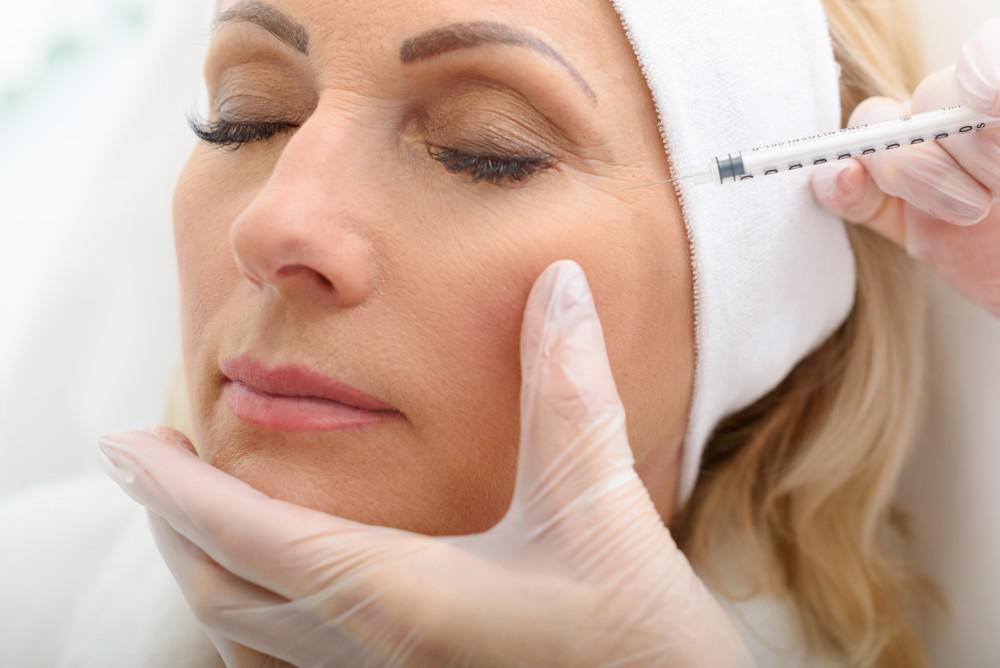When we hit our early thirties, we may still feel youthful, but the first signs of aging are typically setting in. Fortunately, with science progressing in leaps and bounds, it’s never been easier to turn back the clock. Due to its low severity side-effects and high efficacy at improving wrinkles and fine lines, Botox can be a perfect option for anyone looking to refresh their look.
The first step is to book a consultation with a reputable clinic. There, a skilled practitioner, such as one who took a reputable course in Philadelphia to learn Botox injection, will be able to come up with a treatment plan that matches your aesthetic goals.

Image Credit: alluredermny
Contents
Botox Target Areas
Still not sure if Botox is right for you? Let’s take a look at the top four Botox target areas and how they can rejuvenate your skin:
1. Forehead and Frown Lines:
From expressing euphoria to frustration, we use the muscles in our foreheads constantly. Eventually, this leads to the formation of fine lines and wrinkles. Deepening lines on the forehead don’t just contribute to an aged look, but they can give the individual the appearance of being permanently upset or angry. Fortunately, forehead wrinkles can be tackled easily with Botox. Just one treatment can relax the muscles and reduce the appearance of lines for up to six months.
2. Lateral Canthal Lines:
The skin around the eyes is approximately 40% thinner than the skin on the rest of the face. This makes the area more susceptible to loss of volume (collagen) and elastin as we age, resulting in more pronounced lateral canthal lines, colloquially known as “crow’s feet.” The average person also blinks up to 20,000 times a day, which causes repetitive contractions that can exacerbate wrinkles.
Botox injections are a safe and effective treatment for crow’s feet that can last up to 4 months. The results are achieved by injecting Botox around the corners of the eyes and the temples to reduce the strength of the nerve signals responsible for contractions associated with blinking and squinting.
To maximize the efficacy of your Botox and slow development of future lines, steer clear of direct sun and invest in a high-quality eye serum to combat free radicals and UV rays.
3. Perioral Wrinkles:
Perioral wrinkles, or smoker’s lines, tend to appear in our mid-thirties and are caused by both consistent mouth contractions and loss of collagen in this area. These lines are often more pronounced in individuals who smoke or use straws to drink. A common complaint associated with perioral wrinkles is difficulty applying lipstick without the product bleeding into fine lines, which can lead to reduced confidence.
To treat perioral wrinkles, your practitioner will typically inject around 2-4 units of Botox into muscles around the mouth that are used for puckering and associated facial movements. This will relax the muscles and give the skin above them a smoother appearance. This treatment generally lasts for 3-4 months and can also help to prevent the creation of new wrinkles by discouraging oral contractions.
4. Gummy Smiles:
A gummy smile refers to a smile that exposes 3 or more millimeters of gum tissue when the teeth are bared. Often caused by genetic factors, like jaw alignment or gingival hypertrophy, this condition isn’t generally harmful but can lead to reduced confidence and reluctance to smile in some individuals.
A skilled practitioner can reduce the appearance of a gummy smile by injecting the philtrum (the area between your upper lip and nose) with 1-2 units of Botox. This will freeze the muscles that contract when we smile, resulting in a grin that reveals less gum. This procedure can be combined with dermal fillers in the top lip for a more balanced smile that lasts between 4 to 6 months.
For individuals looking to increase their self-confidence and rejuvenate their look, Botox is an effective and non-invasive way to dramatically improve the appearance of fine lines in just a few hours. Book a consultation with an experienced practitioner to determine if this procedure is right for you.


